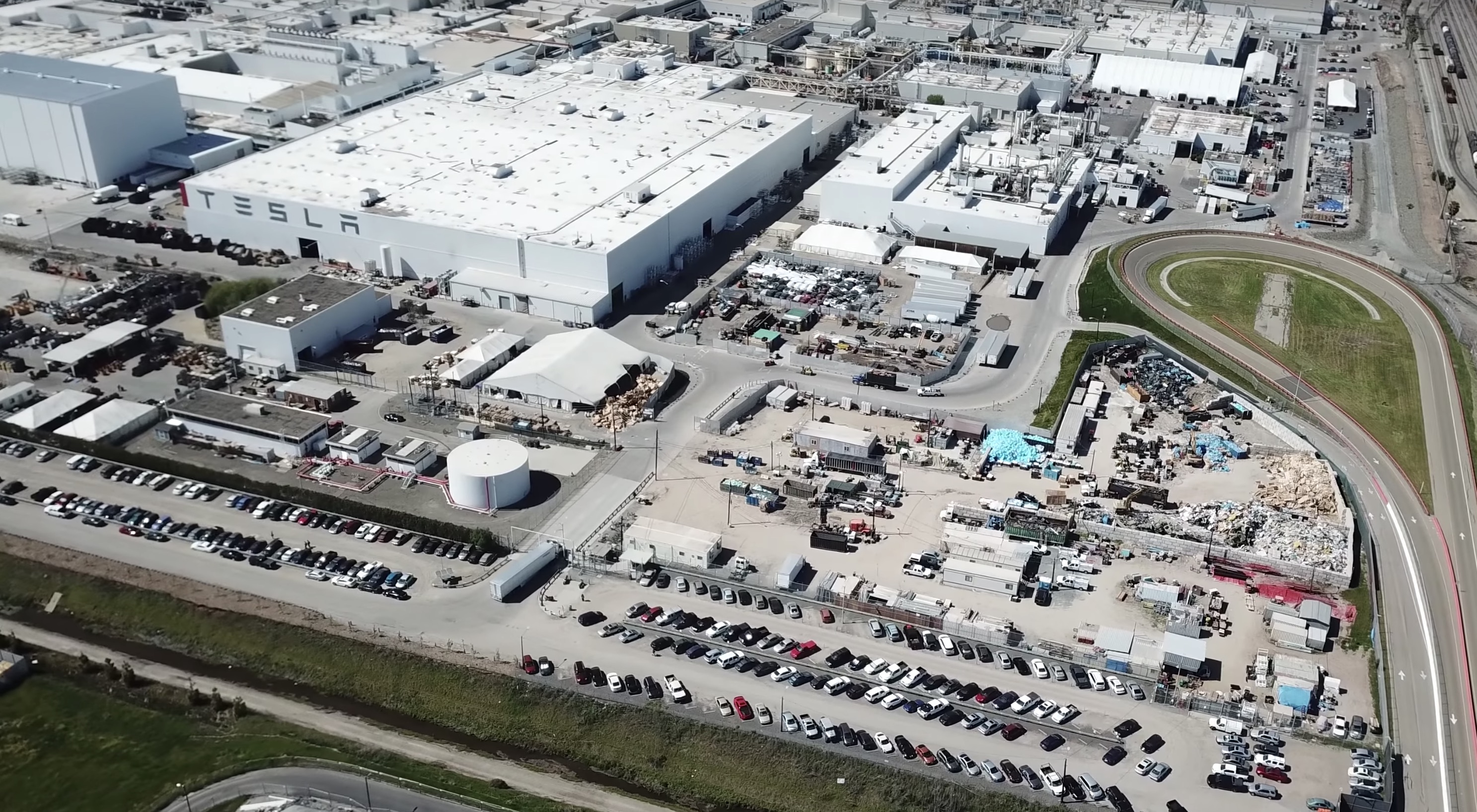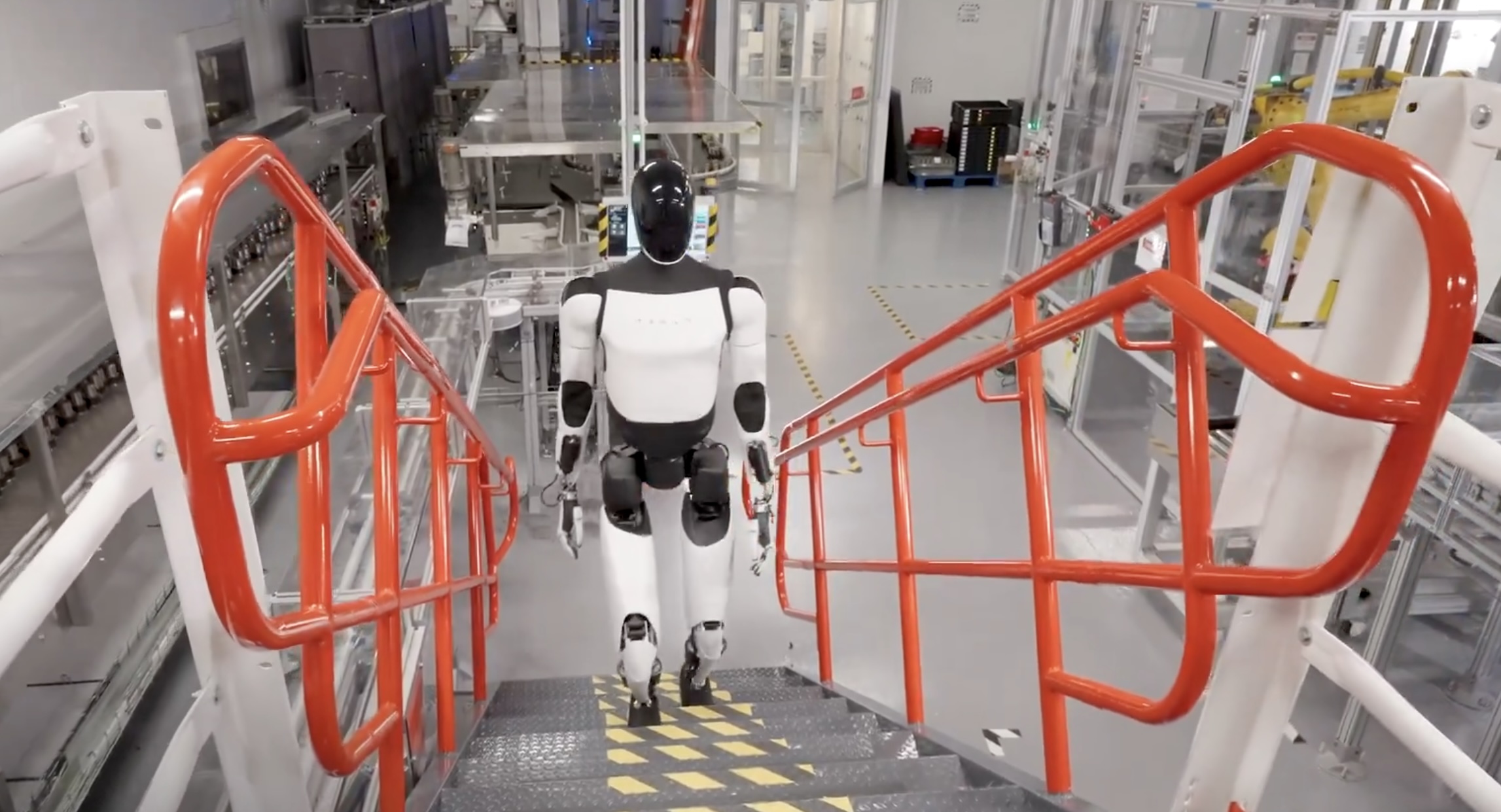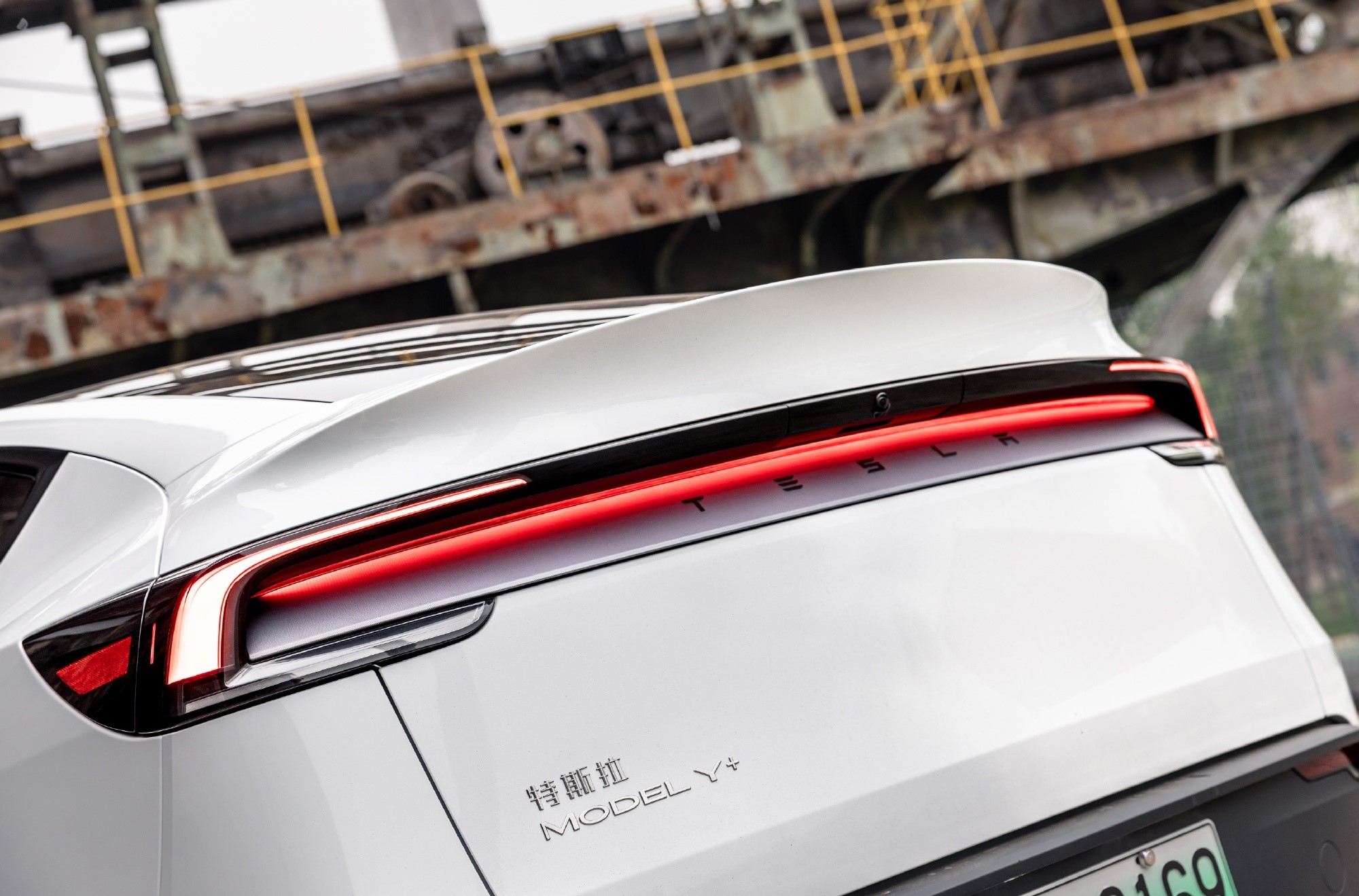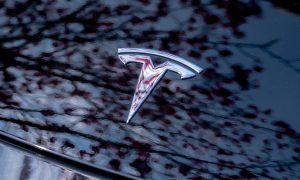

Investor's Corner
Moody’s upgrades Tesla (TSLA) to ‘Stable’ over Model 3 efficiencies, adequate liquidity
Tesla (NASDAQ:TSLA) recently received a positive report and upgrade from Moody’s Investors Service, which changed its outlook towards the electric car maker from “Negative” to “Stable.” In its report, Moody’s affirmed Tesla’s ratings, including the company’s B3 Corporate Family Rating (CFR) and Caa1 senior unsecured ratings. Tesla’s speculative grade liquidity was also changed from SGL-4 (Weak) to SGL-3 (Adequate).
According to the financial firm, Tesla’s B3 CFR reflects the company’s achievements in the production ramp of the Model 3, whose output is “now in line with Moody’s earlier expectations.” This, according to the firm’s report, should allow Tesla to “achieve production efficiencies, lower costs, and strengthen automotive gross margins.” These improvements are also key to offset the losses generated by the company’s automotive service operations, which could then push Tesla towards profitability. Moody’s added that the sale of regulatory credits is expected to give a boost to Tesla’s finances as well.
“An important contributor to achieving net profit will be the sale of regulatory credits, which represent no incremental cost to the company and fall directly to earnings. We expect these sales, which accounted for over $400 million in revenues/earnings during 2018, will continue to grow as emission regulations become more restrictive in all major markets,” Moody’s wrote.
Moody’s stated that it still expects Tesla to generate modestly negative free cash flow of around $500 million over the next 12 months, though the firm expects the electric car maker’s capital expenditures to decrease over this time, thanks to the company’s growing experience in its automotive production business. “Tesla’s increased experience with its production processes have significantly reduced the level of capital expenditures needed to support its growth plans, with annual CapEx falling from approximately $4 billion in 2017 to a current run rate of $1.5 to $2 billion, thus providing a significant boost to expected cash flow,” the firm noted.
Impressively, Moody’s noted that Tesla’s liquidity position is now “Adequate.” The company’s $5 billion in cash, for one, is expected to give the electric car maker a generous cushion to address maturing debt obligations through 2021, as well as address potential operational challenges that it could face in the coming year. Moody’s explains its positive outlook on Tesla’s liquidity as follows.
“Tesla has an adequate liquidity profile supported primarily by its $5 billion cash position. After giving consideration for approximately $1 billion in cash needed to fund normal ongoing operations, and $566 million to cover a November 2019 convertible note maturity, Tesla has incremental liquidity of approximately $3.4 billion. This affords the company an important cushion to contend with potential stress arising from softness in US demand, operational challenges accompanying its European and Chinese expansion plans, and the time that will be necessary to implement additional efficiency-enhancing initiatives,” the firm noted.
Nevertheless, Moody’s argued that Tesla still has notable areas of improvement, particularly in terms of its corporate governance. The firm cites the significant turnover of the company’s senior management ranks including JB Straubel’s recent decision to step aside from his CFO post; the actions of Elon Musk which have resulted in conflicts against the Securities and Exchange Commission; and a board of directors that has “not demonstrated meaningful oversight over the CEO’s activities” as areas of improvement for the electric car maker. While Tesla has been making efforts to improve this, such as the appointment of two new members of its board, Moody’s argues that “Tesla retains a very weak corporate governance structure” nonetheless.
Tesla’s updated rating with Moody’s could be upgraded or downgraded in the future, depending on the company’s performance. The firm noted that it could upgrade Tesla further if the company could demonstrate “sustained profitability and positive free cash flow in the face of rapid expansion plans in Europe and China,” as well as a capability to maintain an adequate liquidity profile. On the other hand, Tesla’s rating could be lowered if demand for its vehicles begins to soften in the United States, or if the company makes missteps in its China and Europe ramp. A downgrade could also happen if Tesla is unable to remain on a clear path towards strengthening margins in its automotive business, while narrowing losses in its other endeavors.
Moody’s full report on Tesla’s recent upgrade could be accessed here.
Disclosure: I have no ownership in shares of TSLA and have no plans to initiate any positions within 72 hours.
Investor's Corner
Tesla could save $2.5B by replacing 10% of staff with Optimus: Morgan Stanley
Jonas assigned each robot a net present value (NPV) of $200,000.

Tesla’s (NASDAQ:TSLA) near-term outlook may be clouded by political controversies and regulatory headwinds, but Morgan Stanley analyst Adam Jonas sees a glimmer of opportunity for the electric vehicle maker.
In a new note, the Morgan Stanley analyst estimated that Tesla could save $2.5 billion by replacing just 10% of its workforce with its Optimus robots, assigning each robot a net present value (NPV) of $200,000.
Morgan Stanley highlights Optimus’ savings potential
Jonas highlighted the potential savings on Tesla’s workforce of 125,665 employees in his note, suggesting that the utilization of Optimus robots could significantly reduce labor costs. The analyst’s note arrived shortly after Tesla reported Q2 2025 deliveries of 384,122 vehicles, which came close to Morgan Stanley’s estimate and slightly under the consensus of 385,086.
“Tesla has 125,665 employees worldwide (year-end 2024). On our calculations, a 10% substitution to humanoid at approximately ($200k NPV/humanoid) could be worth approximately $2.5bn,” Jonas wrote, as noted by Street Insider.
Jonas also issued some caution on Tesla Energy, whose battery storage deployments were flat year over year at 9.6 GWh. Morgan Stanley had expected Tesla Energy to post battery storage deployments of 14 GWh in the second quarter.
Musk’s political ambitions
The backdrop to Jonas’ note included Elon Musk’s involvement in U.S. politics. The Tesla CEO recently floated the idea of launching a new political party, following a poll on X that showed support for the idea. Though a widely circulated FEC filing was labeled false by Musk, the CEO does seem intent on establishing a third political party in the United States.
Jonas cautioned that Musk’s political efforts could divert attention and resources from Tesla’s core operations, adding near-term pressure on TSLA stock. “We believe investors should be prepared for further devotion of resources (financial, time/attention) in the direction of Mr. Musk’s political priorities which may add further near-term pressure to TSLA shares,” Jonas stated.
Investor's Corner
Two Tesla bulls share differing insights on Elon Musk, the Board, and politics
Two noted Tesla bulls have shared differing views on the recent activities of CEO Elon Musk and the company’s leadership.

Two noted Tesla (NASDAQ:TSLA) bulls have shared differing views on the recent activities of CEO Elon Musk and the company’s leadership.
While Wedbush analyst Dan Ives called on Tesla’s board to take concrete steps to ensure Musk remains focused on the EV maker, longtime Tesla supporter Cathie Wood of Ark Invest reaffirmed her confidence in the CEO and the company’s leadership.
Ives warns of distraction risk amid crucial growth phase
In a recent note, Ives stated that Tesla is at a critical point in its history, as the company is transitioning from an EV maker towards an entity that is more focused on autonomous driving and robotics. He then noted that the Board of Directors should “act now” and establish formal boundaries around Musk’s political activities, which could be a headwind on TSLA stock.
Ives laid out a three-point plan that he believes could ensure that the electric vehicle maker is led with proper leadership until the end of the decade. First off, the analyst noted that a new “incentive-driven pay package for Musk as CEO that increases his ownership of Tesla up to ~25% voting power” is necessary. He also stated that the Board should establish clear guidelines for how much time Musk must devote to Tesla operations in order to receive his compensation, and a dedicated oversight committee must be formed to monitor the CEO’s political activities.
Ives, however, highlighted that Tesla should move forward with Musk at its helm. “We urge the Board to act now and move the Tesla story forward with Musk as CEO,” he wrote, reiterating its Outperform rating on Tesla stock and $500 per share price target.
Tesla CEO Elon Musk has responded to Ives’ suggestions with a brief comment on X. “Shut up, Dan,” Musk wrote.
Cathie Wood reiterates trust in Musk and Tesla board
Meanwhile, Ark Investment Management founder Cathie Wood expressed little concern over Musk’s latest controversies. In an interview with Bloomberg Television, Wood said, “We do trust the board and the board’s instincts here and we stay out of politics.” She also noted that Ark has navigated Musk-related headlines since it first invested in Tesla.
Wood also pointed to Musk’s recent move to oversee Tesla’s sales operations in the U.S. and Europe as evidence of his renewed focus in the electric vehicle maker. “When he puts his mind on something, he usually gets the job done,” she said. “So I think he’s much less distracted now than he was, let’s say, in the White House 24/7,” she said.
TSLA stock is down roughly 25% year-to-date but has gained about 19% over the past 12 months, as noted in a StocksTwits report.
Investor's Corner
Cantor Fitzgerald maintains Tesla (TSLA) ‘Overweight’ rating amid Q2 2025 deliveries
Cantor Fitzgerald is holding firm on its bullish stance for the electric vehicle maker.

Cantor Fitzgerald is holding firm on its bullish stance for Tesla (NASDAQ: TSLA), reiterating its “Overweight” rating and $355 price target amidst the company’s release of its Q2 2025 vehicle delivery and production report.
Tesla delivered 384,122 vehicles in Q2 2025, falling below last year’s Q2 figure of 443,956 units. Despite softer demand in some countries in Europe and ongoing controversies surrounding CEO Elon Musk, the firm maintained its view that Tesla is a long-term growth story in the EV sector.
Tesla’s Q2 results
Among the 384,122 vehicles that Tesla delivered in the second quarter, 373,728 were Model 3 and Model Y. The remaining 10,394 units were attributed to the Model S, Model X, and Cybertruck. Production was largely flat year-over-year at 410,244 units.
In the energy division, Tesla deployed 9.6 GWh of energy storage in Q2, which was above last year’s 9.4 GWh. Overall, Tesla continues to hold a strong position with $95.7 billion in trailing twelve-month revenue and a 17.7% gross margin, as noted in a report from Investing.com.
Tesla’s stock is still volatile
Tesla’s market cap fell to $941 billion on Monday amid volatility that was likely caused in no small part by CEO Elon Musk’s political posts on X over the weekend. Musk has announced that he is forming the America Party to serve as a third option for voters in the United States, a decision that has earned the ire of U.S. President Donald Trump.
Despite Musk’s controversial nature, some analysts remain bullish on TSLA stock. Apart from Cantor Fitzgerald, Canaccord Genuity also reiterated its “Buy” rating on Tesla shares, with the firm highlighting the company’s positive Q2 vehicle deliveries, which exceeded its expectations by 24,000 units. Cannacord also noted that Tesla remains strong in several markets despite its year-over-year decline in deliveries.
-

 Elon Musk2 weeks ago
Elon Musk2 weeks agoTesla investors will be shocked by Jim Cramer’s latest assessment
-

 Elon Musk2 days ago
Elon Musk2 days agoxAI launches Grok 4 with new $300/month SuperGrok Heavy subscription
-

 Elon Musk5 days ago
Elon Musk5 days agoElon Musk confirms Grok 4 launch on July 9 with livestream event
-

 News1 week ago
News1 week agoTesla Model 3 ranks as the safest new car in Europe for 2025, per Euro NCAP tests
-

 Elon Musk1 week ago
Elon Musk1 week agoxAI’s Memphis data center receives air permit despite community criticism
-

 News2 weeks ago
News2 weeks agoXiaomi CEO congratulates Tesla on first FSD delivery: “We have to continue learning!”
-

 News2 weeks ago
News2 weeks agoTesla sees explosive sales growth in UK, Spain, and Netherlands in June
-

 Elon Musk2 weeks ago
Elon Musk2 weeks agoTesla scrambles after Musk sidekick exit, CEO takes over sales

















